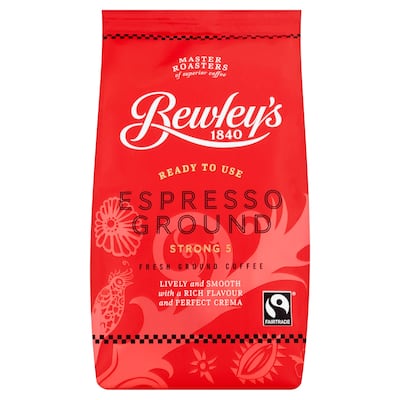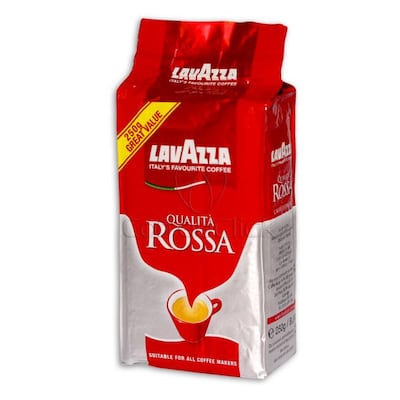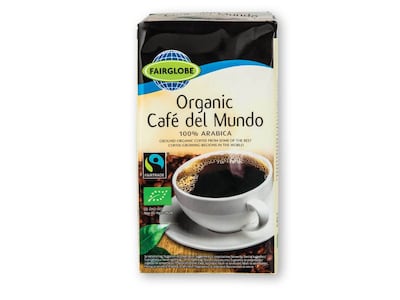Coffee is having a moment in the world of nutrition trends. Whether it’s bulletproof or black, the advice is to drink up. Now we have been told that up to 25 cups a day will not affect heart health. This is based on a study of 8,000 people in the UK, which was part-funded by the British Heart Foundation. So coffee may have you bouncing off the walls, but your heart should be fine. Previous studies have shown different results, however.
In the meantime, what can we learn from the packaging on ground coffee? The first thing you might notice is that a lot of packets say “100 per cent arabica”. That’s because these two beans dominate sales – arabica and robusta – although there are dozens of varieties. Arabica beans account for about 60 per cent of the market and robusta takes up most of the rest. Liberica is popular in southeast Asia but has not made much headway here.
Arabica coffee is considered to be high grade and the beans are grown at altitude. It is favoured over robusta because it tastes sweeter. Robusta can have a burnt taste and it has more caffeine. The coffee berries can be grown at lower altitudes and are more resistant to pests, though, thus offering higher yields. So it costs less to produce.

Bewleys coffee from Java, Colombia and Kenya are all made using arabica beans. Illy’s Classico blend uses sustainably-produced arabica beans from nine regions, it says. Italian supplier Lavazza uses arabica coffee beans from Central America and Brazil in its espresso product, but a selection of Brazilian arabica beans and robusta from Africa and South East Asia in its Qualita Rossa coffee.
Even the discounters, such as Lidl and Aldi, sell coffee made with arabica beans.They can afford to do so as the beans are now achieving some of the lowest prices in a decade. That’s partly because Brazil, which is the largest exporter of arabica beans with 28 per cent of world trade, has been increasing production even as the value of its currency, the real, fell. Thus dragging down prices around the world.
Good crema
Vietnam is the biggest producer of robusta. It is usually blended with arabica as it can ensure a stronger depth of flavour and good crema, which is the foam seen on espresso. That makes it popular in southern Italy.
What really affects the taste is where the beans have been grown, with Ethiopian and Jamaican Blue Mountain often cited as the best. It is a matter of taste.

Ground coffee is made from beans that have been roasted. Some packets indicate whether they are light, medium or dark roast. The light is roasted at the lowest temperature and the dark at the highest, yielding a deeper flavour. Lavazza espresso is a medium roast, for example.
The other symbols most often seen are those indicating some measure of sustainability. The Rainforest Alliance, which has a green frog as its symbol, is a non-governmental organisation that promotes sustainable practices in agriculture, forestry and tourism. Its stated aims are to improve “livelihoods and well-being of farmers, protect endangered species, respect the rights of local communities and indigenous people, and use natural resources wisely”. Products that display the Rainforest Alliance certification have been audited by the organisation. Its symbol can be seen on many brands including Frank and Honest, Lidl and Aldi.
Fairtrade
The Fairtrade mark can be seen on plenty of other brands, including products from Bewleys and Tesco, which partners with co-operatives to support groups of small scale farmers in such places as Costa Rica.

For most Fairtrade goods there is a minimum price set to cover the cost of sustainable production of that product in the region. Workers and farmers also receive more money in the form of a “Fairtrade premium”. This goes into a communal fund to be used to improve their social, economic and environmental conditions. The surprise is that Fairtrade certified coffee often costs no more than other products these days. Fancy packaging and seductive marketing words seem to count for more.
It might seem that all coffee brands are now signed up to one organisation or another, but that’s not the case. Carte Noire, for example, which is owned by Kraft Foods, has no indication it attempts to offer farmers a good deal.
The price of coffee is now so low many farmers in south America are giving up and heading north. It is worth checking the packaging to see if the producers of your coffee might have been treated fairly.
FOOD LABELS SERIES
- Bread
- Soup
- Crisps
- Sliced ham
- Cream crackers
(search other food labels articles here)



















